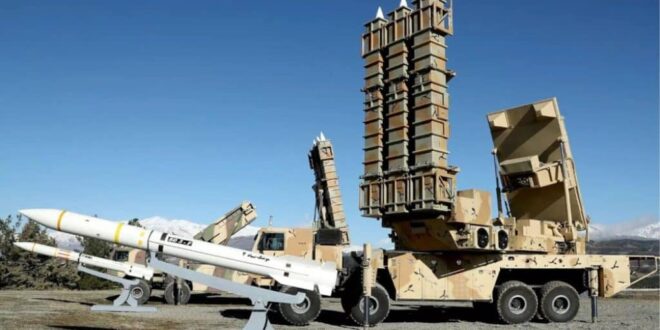The regime in Tehran finds itself increasingly besieged by challenges, ranging from the faltering influence of its regional proxies to the prospect of an Israeli strike on its nuclear facilities, potentially bolstered by US support. In response, the Islamic Republic has devised a three-pronged strategy: bolstering morale through a reinvigorated propaganda campaign, conducting extensive military drills to showcase readiness, and amplifying support for its remaining proxies.
Propaganda as a tool of survival
Confronted with a cascade of regional setbacks epitomized by the diminishing effectiveness of its proxies, Tehran’s leadership has descended into a state of alarm. Ever mindful of its authoritarian imperative to project strength, the regime appears more perturbed by the erosion of its narrative than by the threat of direct military confrontation. Consequently, it has redoubled its domestic propaganda efforts.
Supreme Leader Ali Khamenei underscored the strategic importance of this messaging, proclaiming that “the victory of one side is determined by its ability to convey its narrative.” He urged state media operatives to adopt a doctrine of “precision, persistence, and innovation.” In alignment with these directives, Foreign Minister Abbas Araghchi attributed Syria’s destabilization to “psychological factors” and cautioned against allowing adversaries to “sow instability and despair” through media platforms.
To fulfill Khamenei’s mandate, officials and state-controlled media outlets have intensified their dissemination of anti-Israel rhetoric. For example, Araghchi warned of an unprecedented escalation in conflict should Israel target Iranian assets. Meanwhile, an IRGC spokesperson declared that “Israeli airspace is wide open and defenseless” against Iranian attacks. The regime’s social media accounts added to these threats by circulating ominous messages alluding to a potential third round of the “True Promise” operation, referencing the ballistic missile attacks Iran launched against Israel in April and October 2024.
Military maneuvers: a show of force
To display its military preparedness, the regime has conducted a series of large-scale drills involving both the Islamic Revolutionary Guard Corps (IRGC) and the conventional army, Artesh. Key participants included the Artesh 41st Mobile Assault Brigade, the 35th Special Forces Brigade, and the IRGC Ground Forces’ “Mirza Kuchak Khan” Brigade, named after a Soviet-backed guerrilla fighter who operated in northern Iran during World War I. These exercises seemed aimed at countering threats in Syria and Iraq, particularly the Ankara-backed Hayat Tahrir al Sham in Syria and Kurdish separatist groups in western Iran and Iraqi Kurdistan.
Simultaneously, the Khatam al Anbia Joint Air Defense Headquarters coordinated extensive air drills, signaling Tehran’s anticipation of a potential Israeli airstrike on its nuclear sites. The exercises featured IRGC Aerospace Force-manufactured defense systems, including the Tabas, Raad, 3 Khordad, 9 Dey, and Dezful, which practiced intercepting bunker-buster bombs near the Natanz nuclear facility—a well-known hub of Iran’s suspected nuclear weaponization efforts.
Escalation of proxy support
Tehran has also escalated its backing of its two most resilient proxies: Iraqi Shia militias and Yemen’s Houthis. IRGC Quds Force commanders have actively engaged with the Popular Mobilization Forces in Iraq, discussing plans to “restructure” their command hierarchy and refine their operational objectives. Similarly, Houthi officials revealed that Iran has supplied them with resources sufficient to sustain their strikes on Israel and attacks on global shipping routes for years.
Such actions are likely to provoke a decisive response from Washington. The impending return of the administration of US President Donald Trump, which originally designated the Houthis as a terrorist organization, portends a more aggressive stance against Iran’s proxies. Trump-era policies already included airstrikes on Houthi targets, and prominent Iraqi Shia figures aligned with Tehran are reportedly concerned about renewed US pressure on Baghdad to dismantle these militias. The lingering specter of Trump’s 2020 drone strike that killed IRGC Quds Force Commander Qassem Soleimani and his Iraqi ally, Abu Mahdi al Muhandis, further amplifies these fears.
The Israeli-American nexus against Iran’s nuclear ambitions
The prospect of a Trump administration returning to power bodes ill for Iran’s nuclear ambitions. Tehran’s escalating nuclear threat continues to alarm US lawmakers, and Trump previously entertained the possibility of airstrikes to dismantle its nuclear program. Unlike President Joe Biden’s reluctance to strike Iran’s nuclear sites, Trump’s rhetoric suggests a strong alignment with Israeli Prime Minister Benjamin Netanyahu on the shared imperative of countering the progress of Iran’s program.
 Eurasia Press & News
Eurasia Press & News




